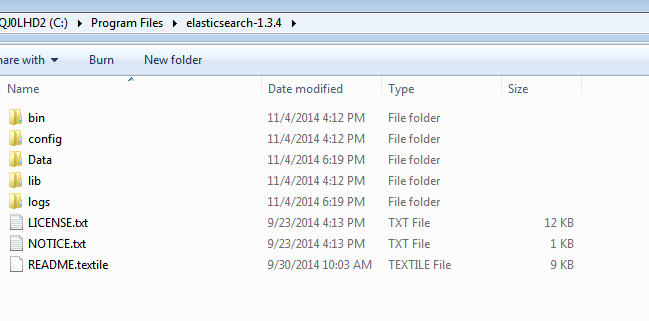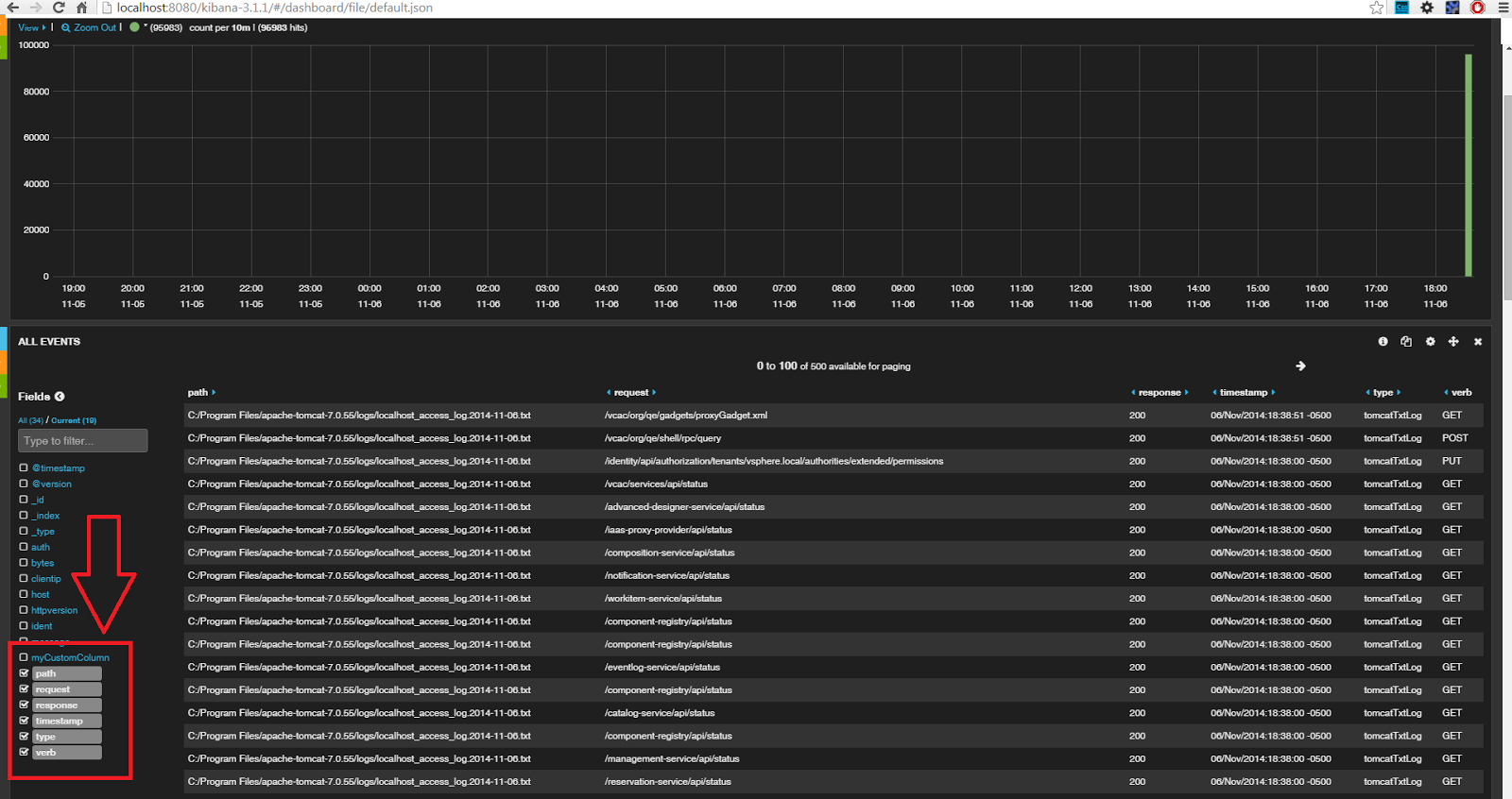What is Windows PowerShell?
Windows 7 powershell located at
Start>All Programs>Accessories>Windows PowerShell>Windows PowerShell
is command line tool which was built on top of .net framework. Windows powershell can be thought of as an advanced version of windows command prompt. (And PowerShell script is the advanced replacement for batch file) You can do a lot of things in powershell that you couldn't in the command prompt. In fact the industry push is towards using powershell for all windows computer administration tasks. Almost any windows administration task you can do thru a GUI, you can do it using powershell. The fact that command line tools barely change over time, makes it even more worth-while mastering them. The first version of powershell was released with Windows XP SP2 in 2006 as an optional add-on.
PowerShell Verbs and Nouns
All command-lets (commands) in powershell follow a verb-noun syntax. For example Get-Location, Set-Location, Get-Help, Clear-Host and so on. Once you understand this, you could guess many of the commands in PowerShell. PowerShell has a logical naming scheme for its commands.
Most common verbs used in powershell
Get
Set
Add
Out
Start
Restart
Stop
Most common nouns used in powershell
Help
Command
Computer
Service
ChildItems
Location
Frequently used PowerShell command-lets (commands)
Most commonly used commands in powershell
Powershell Command-Let
example
|
What does it do?
|
|
|
Get-Content myFile.txt
|
Prints out the contents of
myFile.txt onto the console window
|
Get-ChildItem
|
Lists all the items in the current
directory (Same as dir in command prompt)
|
Get-ChildItem|
select-object Name, LastWriteTime
|
sort-object LastWriteTime
|
Lists all the items in the current
directory.
Only display their Name and
LastWriteTime.
Order by LastWriteTime ascending
(The pipes are used to add conditions)
|
Copy-Item myFile.txt
myFileCopy.txt
|
Creates a copy of myFile.txt and
names that copy myFileCopy.txt
|
Invoke-item .
|
Open current directory
|
Clear-Host
|
Clear screen. (Same as cls from
command prompt)
|
get-alias
|
Gives you short forms for various
commands
|
set-alias list Get-ChildItem
|
Give Get-ChildItem an
alias of list. In other words I am telling powershell, when I execute
list what I mean is execute Get-ChildItem.
Note: Once you close the window
the aliases you created are lost.
|
export-alias myAlias.csv
|
Export all aliases to a file
called myAlias.csv
|
export-alias myAlias.csv
|
Import all the aliases in the file
myAlias.csv
|
Get-Command
|
Gets all the
available commands
|
Get-Command
-verb "get"
|
Get all the
commands with the verb “get” in it
For example
Get-Host, Get-Process and so on
|
Get-Command
-noun "job"
|
Get all the
commands with the noun job in it.
For example
Get-Job, Receive-Job and so on
|
Get-Command
-type cmdlet
|
Gets all the command-lets in powershell
|
Get-Help Get-Job
-full
|
Gives you an
explanation on what the command Get-Job does, explains to you its parameters
and gives you some examples on how to use that command
|
Get-Location
|
Gets information about the current
working location.
|
$test= "C:\Users\menonv\Desktop\myFile.txt"
(Get-Content $test).Replace("Hello","Hi")| Out-File $test
|
In the file myFile.txt, replace Hello with Hi.
|
$env:Path
| Gives you the value of the environment variable path |
[Environment]::SetEnvironmentVariable( "NameOfTheVariable", "ValueOfTheVariable", [System.EnvironmentVariableTarget]::Machine )
|
Saves a system environment variable with the name NameOfTheVariable
and the
value ValueOfTheVariable
|
|
|
|
|
|
|
|
|
Of all the command-lets above
Get-Command And
Get-Help are the most useful commands-lets. Thats why I have highlighted them.
PowerShell Providers
PowerShell providers are basically .net libraries for navigating some source (such as environment variables, registry, a remote computer and so on). To find all the providers run the command
get-psprovider
You will see a result like this one (without the table :) )
Name
|
Capabilities
|
Drives
|
WSMan
|
Credentials
|
{WSMan}
|
Alias
|
ShouldProcess
|
{Alias}
|
Environment
|
ShouldProcess
|
{Env}
|
FileSystem
|
Filter, ShouldProcess
|
{C, D}
|
Function
|
ShouldProcess
|
{Function}
|
Registry
|
ShouldProcess, Transactions
|
{HKLM, HKCU}
|
Variable
|
ShouldProcess
|
{Variable}
|
Certificate
|
ShouldProcess
|
{cert}
|
To navigate any of these sources you will have to
"change your drive" to that provider. That's how the providers work in PowerShell. For example if I want to see all my environment variables this is what I would do
set-location Env:
get-ChildItem
PowerShell Snapins
We get access to providers via powershell snapins. To see a list of currently loaded sanpins run the command-let
get-pssnapin
You will see something like this
Name : Microsoft.PowerShell.Diagnostics
PSVersion : 2.0
Description : This Windows PowerShell snap-in contains Windows Eventing and Performance Counter cmdlets.
Name : Microsoft.WSMan.Management
PSVersion : 2.0
Description : This Windows PowerShell snap-in contains cmdlets (such as Get-WSManInstance and Set-WSManInstance) that are used by the Windows Pow
erShell host to manage WSMan operations.
Name : Microsoft.PowerShell.Core
PSVersion : 2.0
Description : This Windows PowerShell snap-in contains cmdlets used to manage components of Windows PowerShell.
Name : Microsoft.PowerShell.Utility
PSVersion : 2.0
Description : This Windows PowerShell snap-in contains utility Cmdlets used to manipulate data.
Name : Microsoft.PowerShell.Host
PSVersion : 2.0
Description : This Windows PowerShell snap-in contains cmdlets (such as Start-Transcript and Stop-Transcript) that are provided for use with the
Windows PowerShell console host.
Name : Microsoft.PowerShell.Management
PSVersion : 2.0
Description : This Windows PowerShell snap-in contains management cmdlets used to manage Windows components.
Name : Microsoft.PowerShell.Security
PSVersion : 2.0
Description : This Windows PowerShell snap-in contains cmdlets to manage Windows PowerShell security.
To see a list of snapins that are available but not loaded can be found by running
get-pssnapin -Registered
You will see something like
Name : SqlServerCmdletSnapin100
PSVersion : 2.0
Description : This is a PowerShell snap-in that includes various SQL Server cmdlets.
Name : SqlServerProviderSnapin100
PSVersion : 2.0
Description : SQL Server Provider
Name : WDeploySnapin3.0
PSVersion : 2.0
Description : This is a PowerShell snap-in that contains cmdlets for managing Microsoft Web Deployment infrastructure.
As you can see there are two snapins that I could load to access my sql server database
This is how you load those snapins
add-pssnapin SqlServerCmdletSnapin100
add-pssnapin SqlServerProviderSnapin100
Now if you run the get-psprovider command, you will see that SQL Server is available on the drive "SQLSERVER"
Accessing SQL Server via powershell
Now that we load the SQL server snapin, we can access the local SQL server.
Clear-Host
set-location SQLSERVER:\
get-childitem
Now you will see something like this
PSPath : SqlServerProviderSnapin100\SqlServer::SQLSERVER:\SQL
PSParentPath : SqlServerProviderSnapin100\SqlServer::SQLSERVER:
PSChildName : SQL
PSDrive : SQLSERVER
PSProvider : SqlServerProviderSnapin100\SqlServer
PSIsContainer : True
Name : SQL
Root : SQLSERVER:\SQL
Description : SQL Server Database Engine
PSPath : SqlServerProviderSnapin100\SqlServer::SQLSERVER:\SQLPolicy
PSParentPath : SqlServerProviderSnapin100\SqlServer::SQLSERVER:
PSChildName : SQLPolicy
PSDrive : SQLSERVER
PSProvider : SqlServerProviderSnapin100\SqlServer
PSIsContainer : True
Name : SQLPolicy
Root : SQLSERVER:\SQLPolicy
Description : SQL Server Policy Management
PSPath : SqlServerProviderSnapin100\SqlServer::SQLSERVER:\SQLRegistration
PSParentPath : SqlServerProviderSnapin100\SqlServer::SQLSERVER:
PSChildName : SQLRegistration
PSDrive : SQLSERVER
PSProvider : SqlServerProviderSnapin100\SqlServer
PSIsContainer : True
Name : SQLRegistration
Root : SQLSERVER:\SQLRegistration
Description : SQL Server Registrations
PSPath : SqlServerProviderSnapin100\SqlServer::SQLSERVER:\DataCollection
PSParentPath : SqlServerProviderSnapin100\SqlServer::SQLSERVER:
PSChildName : DataCollection
PSDrive : SQLSERVER
PSProvider : SqlServerProviderSnapin100\SqlServer
PSIsContainer : True
Name : DataCollection
Root : SQLSERVER:\DataCollection
Description : SQL Server Data Collection
PSPath : SqlServerProviderSnapin100\SqlServer::SQLSERVER:\Utility
PSParentPath : SqlServerProviderSnapin100\SqlServer::SQLSERVER:
PSChildName : Utility
PSDrive : SQLSERVER
PSProvider : SqlServerProviderSnapin100\SqlServer
PSIsContainer : True
Name : Utility
Root : SQLSERVER:\Utility
Description : SQL Server Utility
PSPath : SqlServerProviderSnapin100\SqlServer::SQLSERVER:\DAC
PSParentPath : SqlServerProviderSnapin100\SqlServer::SQLSERVER:
PSChildName : DAC
PSDrive : SQLSERVER
PSProvider : SqlServerProviderSnapin100\SqlServer
PSIsContainer : True
Name : DAC
Root : SQLSERVER:\DAC
Description : SQL Server Data-Tier Application Component
Take a note of the PSChildName where the description is SQL server Database engine
Clear-Host
set-location SQL
get-childitem
You will see something like this
PSPath : SqlServerProviderSnapin100\SqlServer::SQLSERVER:\SQL\VIVEK-PC
PSParentPath : SqlServerProviderSnapin100\SqlServer::SQLSERVER:\SQL
PSChildName : VIVEK-PC
PSDrive : SQLSERVER
PSProvider : SqlServerProviderSnapin100\SqlServer
PSIsContainer : True
MachineName : VIVEK-PC
ManagedComputer : Microsoft.SqlServer.Management.Smo.Wmi.ManagedComputer
Servers : {[DEFAULT, Microsoft.SqlServer.Management.PowerShell.Extensions.ServerInformation]}
Take note of the PSChildName.
Clear-Host
set-location VIVEK-PC
get-childitem
PSPath : SqlServerProviderSnapin100\SqlServer::SQLSERVER:\SQL\VIVEK-PC\DEFAULT
PSParentPath : SqlServerProviderSnapin100\SqlServer::SQLSERVER:\SQL\VIVEK-PC
PSChildName : DEFAULT
PSDrive : SQLSERVER
PSProvider : SqlServerProviderSnapin100\SqlServer
PSIsContainer : True
DisplayName : DEFAULT
AuditLevel : Failure
BackupDirectory : C:\Program Files\Microsoft SQL Server\MSSQL10_50.MSSQLSERVER\MSSQL\Backup
BrowserServiceAccount : NT AUTHORITY\LOCALSERVICE
BrowserStartMode : Disabled
BuildClrVersionString : v2.0.50727
BuildNumber : 1617
Collation : SQL_Latin1_General_CP1_CI_AS
CollationID : 872468488
ComparisonStyle : 196609
ComputerNamePhysicalNetBIOS : VIVEK-PC
DefaultFile :
DefaultLog :
Edition : Developer Edition (64-bit)
ErrorLogPath : C:\Program Files\Microsoft SQL Server\MSSQL10_50.MSSQLSERVER\MSSQL\Log
FilestreamLevel : Disabled
FilestreamShareName : MSSQLSERVER
InstallDataDirectory : C:\Program Files\Microsoft SQL Server\MSSQL10_50.MSSQLSERVER\MSSQL
InstallSharedDirectory : c:\Program Files\Microsoft SQL Server\MSSQL10_50.MSSQLSERVER\MSSQL
InstanceName :
IsCaseSensitive : False
IsClustered : False
IsFullTextInstalled : True
IsSingleUser : False
Language : English (United States)
LoginMode : Mixed
MailProfile :
MasterDBLogPath : C:\Program Files\Microsoft SQL Server\MSSQL10_50.MSSQLSERVER\MSSQL\DATA
MasterDBPath : C:\Program Files\Microsoft SQL Server\MSSQL10_50.MSSQLSERVER\MSSQL\DATA
MaxPrecision : 38
NamedPipesEnabled : False
NetName : VIVEK-PC
NumberOfLogFiles : -1
OSVersion : 6.1 (7601)
PerfMonMode : None
PhysicalMemory : 16298
PhysicalMemoryUsageInKB : 186024
Platform : NT x64
Processors : 4
ProcessorUsage : 0
Product : Microsoft SQL Server
ProductLevel : RTM
ResourceLastUpdateDateTime : 4/22/2011 2:40:54 PM
ResourceVersionString : 10.50.1617
RootDirectory : c:\Program Files\Microsoft SQL Server\MSSQL10_50.MSSQLSERVER\MSSQL
ServerType : Standalone
ServiceAccount : NT AUTHORITY\NETWORKSERVICE
ServiceInstanceId : MSSQL10_50.MSSQLSERVER
ServiceName : MSSQLSERVER
ServiceStartMode : Auto
SqlCharSet : 1
SqlCharSetName : iso_1
SqlDomainGroup : Vivek-PC\SQLServerMSSQLUser$Vivek-PC$MSSQLSERVER
SqlSortOrder : 52
SqlSortOrderName : nocase_iso
Status : Offline
TapeLoadWaitTime : -1
TcpEnabled : False
VersionMajor : 10
VersionMinor : 50
VersionString : 10.50.1617.0
Name : VIVEK-PC
Version : 10.50.1617
EngineEdition : EnterpriseOrDeveloper
ResourceVersion : 10.50.1617
BuildClrVersion : 2.0.50727
DefaultTextMode : True
Configuration : Microsoft.SqlServer.Management.Smo.Configuration
AffinityInfo : Microsoft.SqlServer.Management.Smo.AffinityInfo
ProxyAccount : [VIVEK-PC]
Mail : [VIVEK-PC]
Databases : {master, model, msdb, Play...}
Endpoints : {Dedicated Admin Connection, TSQL Default TCP, TSQL Default VIA, TSQL Local Machine...}
Languages : {Arabic, British, čeština, Dansk...}
SystemMessages : {21, 21, 21, 21...}
UserDefinedMessages : {}
Credentials : {}
CryptographicProviders : {}
Logins : {##MS_PolicyEventProcessingLogin##, ##MS_PolicyTsqlExecutionLogin##, NT AUTHORITY\NETWORK SERVICE, NT AU
THORITY\SYSTEM...}
Roles : {bulkadmin, dbcreator, diskadmin, processadmin...}
LinkedServers : {}
SystemDataTypes : {bigint, binary, bit, char...}
JobServer : [VIVEK-PC]
ResourceGovernor : Microsoft.SqlServer.Management.Smo.ResourceGovernor
ServiceMasterKey : Microsoft.SqlServer.Management.Smo.ServiceMasterKey
Settings : Microsoft.SqlServer.Management.Smo.Settings
Information : Microsoft.SqlServer.Management.Smo.Information
UserOptions : Microsoft.SqlServer.Management.Smo.UserOptions
BackupDevices : {}
FullTextService : [VIVEK-PC]
ActiveDirectory : Microsoft.SqlServer.Management.Smo.ServerActiveDirectory
Triggers : {}
Audits : {}
ServerAuditSpecifications : {}
ConnectionContext : server='VIVEK-PC';Trusted_Connection=true;Connect Timeout=30;Application Name='SQLPS (Vivek@VIVEK-PC)';m
ultipleactiveresultsets=false
Events : Microsoft.SqlServer.Management.Smo.ServerEvents
OleDbProviderSettings :
Urn : Server[@Name='VIVEK-PC']
Properties : {Name=AuditLevel/Type=Microsoft.SqlServer.Management.Smo.AuditLevel/Writable=True/Value=Failure, Name=Ba
ckupDirectory/Type=System.String/Writable=True/Value=C:\Program Files\Microsoft SQL Server\MSSQL10_50.MS
SQLSERVER\MSSQL\Backup, Name=BuildNumber/Type=System.Int32/Writable=False/Value=1617, Name=DefaultFile/T
ype=System.String/Writable=True/Value=...}
UserData :
State : Existing
Note the PSChildName.
Clear-Host
set-location DEFAULT
get-childitem
Audits
BackupDevices
Credentials
CryptographicProviders
Databases
Endpoints
JobServer
Languages
LinkedServers
Logins
Mail
ResourceGovernor
Roles
ServerAuditSpecifications
SystemDataTypes
SystemMessages
Triggers
UserDefinedMessages
Running the command below will show you all the databases on your SQL server
Clear-Host
set-location Databases
get-childitem | Select-Object PSChildName












